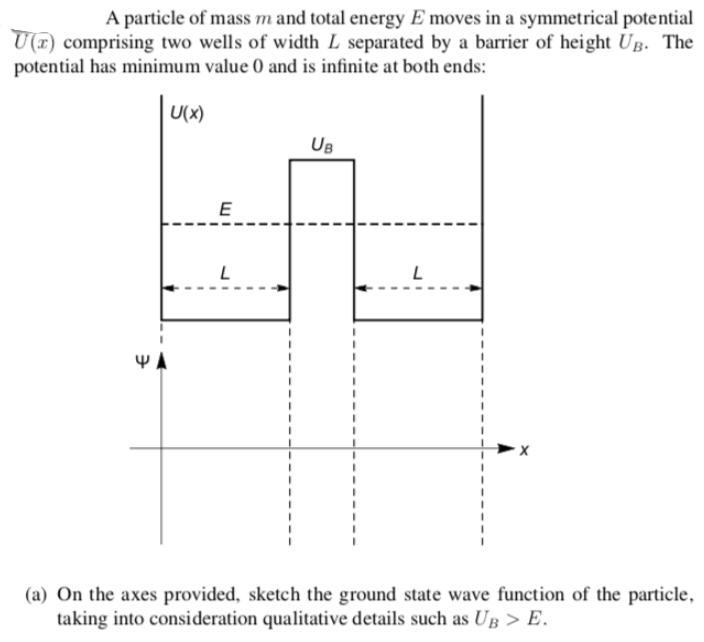Answered step by step
Verified Expert Solution
Question
1 Approved Answer
A particle of mass m and total energy E moves in a symmetrical potential U(T) comprising two wells of width L separated by a


A particle of mass m and total energy E moves in a symmetrical potential U(T) comprising two wells of width L separated by a barrier of height UB. The potential has minimum value 0 and is infinite at both ends: U(x) E L UB L (a) On the axes provided, sketch the ground state wave function of the particle, taking into consideration qualitative details such as UB > E. (b) Determine the value of the ground state energy for the limiting case UB 0. Call this E. (c) Which is the correct statement about the ground state energy E for a finite barrier? Briefly explain your choice. E> E E = Ex E < E A particle of mass m and total energy E moves in a symmetrical potential U(T) comprising two wells of width L separated by a barrier of height UB. The potential has minimum value 0 and is infinite at both ends: U(x) E L UB L (a) On the axes provided, sketch the ground state wave function of the particle, taking into consideration qualitative details such as UB > E. (b) Determine the value of the ground state energy for the limiting case UB 0. Call this E. (c) Which is the correct statement about the ground state energy E for a finite barrier? Briefly explain your choice. E> E E = Ex E < E
Step by Step Solution
There are 3 Steps involved in it
Step: 1
B A particle of mass in and total eurgy E moves in a symetric...
Get Instant Access to Expert-Tailored Solutions
See step-by-step solutions with expert insights and AI powered tools for academic success
Step: 2

Step: 3

Ace Your Homework with AI
Get the answers you need in no time with our AI-driven, step-by-step assistance
Get Started


